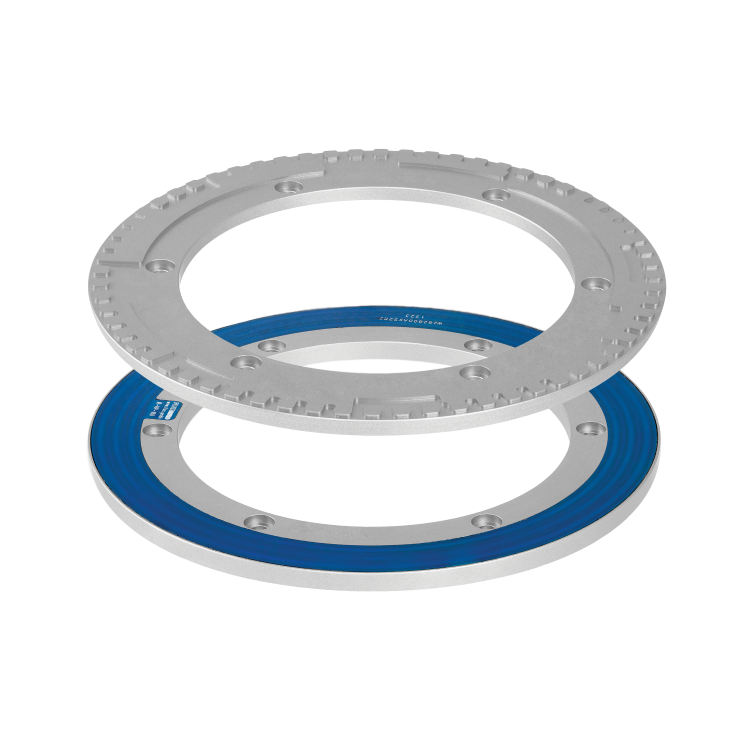Inductive Sensor: An Engineer’s Guide
Learn what an inductive sensor is, how it works, key characteristics, benefits, and common applications.
Inductive sensors are the leading technology for reliable sensing in harsh environments. Their robust design makes them ideal for industrial manufacturing, automation, and other demanding applications where extreme conditions challenge traditional sensing technologies. This guide explores how inductive sensors work, their key advantages, real-world applications, and the benefits they bring to various industries.
What is an Inductive Sensor?
An inductive sensor is a type of non-contact device that detects metal objects by generating an electromagnetic field. When a metal target enters this field, the sensor detects changes in inductance and converts them into an electrical signal. There are several types of inductive sensors, including simple proximity switches, variable inductance and variable reluctance sensors, synchros and resolvers, and more advanced technologies like rotary and linear variable differential transformers (RVDTs & LVDTs) and next-generation inductive encoders.

Inductive Sensor Applications
Inductive sensors are a proven technology for reliable performance in extreme conditions. Designed to operate without physical contact, these sensors are highly resistant to wear, temperature changes, moisture, vibration, and contaminants like dust and chemicals.
Their durability makes them the go-to solution for safety-critical and high-reliability applications across a variety of industries.
Heavy Industry & Manufacturing
- Robotic Arm Positioning – Provides precise movement feedback for automation
- CNC Machine Tool Position Sensing – Ensures accuracy in machining operations
- Conveyor System Alignment – Tracks position for automated material handling
Aerospace, Defense & UAVs
- Landing Gear Position Sensing – Ensures correct deployment and retraction of aircraft landing gear
- Flight Control Positioning – Tracks control surfaces such as flaps, rudders, and stabilizers
- Missile and Weapon System Alignment – Provides real-time position feedback for targeting systems
- UAV Navigation & Landing Systems – Detects position changes for autonomous takeoff and landing
Subsea & Underwater Robotics
- ROV & AUV Positioning – Tracks thruster and actuator movement for deep-sea operations
- Diver Propulsion Systems – Provides position feedback for underwater navigation
- Subsea Valve Position Sensing – Ensures safe operation of critical oil and gas infrastructure
- Sonar and Camera System Alignment – Maintains accurate positioning for underwater imaging
Medical Robotics & Devices
- Surgical Robot Position Sensing – Provides real-time feedback for robotic-assisted surgery
- MRI-Compatible Sensor Systems – Tracks movement in magnetic environments without interference
- Exoskeleton and Prosthetic Limb Positioning – Enhances mobility with precise motion detection
- Automated Medical Equipment – Ensures accurate positioning in drug delivery and diagnostic devices
Energy & Offshore Applications
- Wind Turbine Blade Position Monitoring – Optimizes efficiency and performance in renewable energy systems
- Oil & Gas Drilling Position Feedback – Tracks drill bit location for precision drilling
- Hydroelectric Dam Gate Position Sensing – Ensures accurate control of water flow
- Nuclear Reactor Valve Position Detection – Monitors critical components for safety compliance
Inductive Sensor Characteristics
When selecting an inductive sensor, it is important to consider the following key features:
- High Robustness: Built to withstand dust, moisture, and chemicals, making them perfect for tough industrial environments.
- Long Operating Life: As they do not have any contacting parts, they get less deteriorated and have a longer operating life.
- Fast Response Time: Their high-speed response towards metal objects makes them suitable for high-speed applications.
- Easy Installation: Their compact nature and toughness make them simple to install within any system.
- Environmental Immunity: They are not as vulnerable to temperature or lighting variation as other sensors.
Inductive Sensor Benefits
Inductive sensors offer a wide range of benefits, especially in harsh environments, making them the preferred choice over alternative position sensing technologies like optical encoders, capacitive encoders, and magnetic encoders.
1. Superior Performance in Contaminated Environments
- Unlike optical encoders, which can fail due to dust, oil, or debris blocking the light path, inductive sensors remain fully operational in dirty, wet, or greasy environments.
- The same applies to capacitive encoders which rely on the interaction of electric fields. The presence of dust, moisture, or oil can interfere with operation, leading to accuracy degradation or failure.
2. Resistance to Extreme Temperatures
- Inductive sensors function reliably in high-temperature environments, making them ideal for applications in industrial automation, aerospace, and heavy machinery.
- Magnetic encoders can suffer from demagnetization at high temperatures, leading to performance degradation, while inductive sensors maintain accuracy.
3. Immunity to Magnetic Interference
- Unlike magnetic encoders, which can be disrupted by nearby electromagnetic fields (such as those from motors, transformers, or power lines), inductive sensors operate without interference.
4. High Shock and Vibration Resistance
- Inductive sensors can withstand extreme shock and vibration, unlike optical encoders, which contain fragile components such as glass discs or sensitive electrodes.
5. Reliable in Subsea and High-Pressure Environments
- Inductive sensors are ideal for subsea and high-pressure applications where other technologies fail. Optical and capacitive encoders cannot operate reliably in oil-filled housings, as their principles are disrupted by liquids.
- In contrast, FLUX inductive sensors function flawlessly in non-conductive fluids like oil, thanks to their sealed, contactless design. This makes them well-suited for ROVs, AUVs, offshore drilling, and other deep-sea systems.
6. Low Power Consumption
Inductive sensors are energy-efficient, consuming less power compared to some other technologies like magnetic encoders or optical encoders, which may require higher power for signal processing or illumination.
